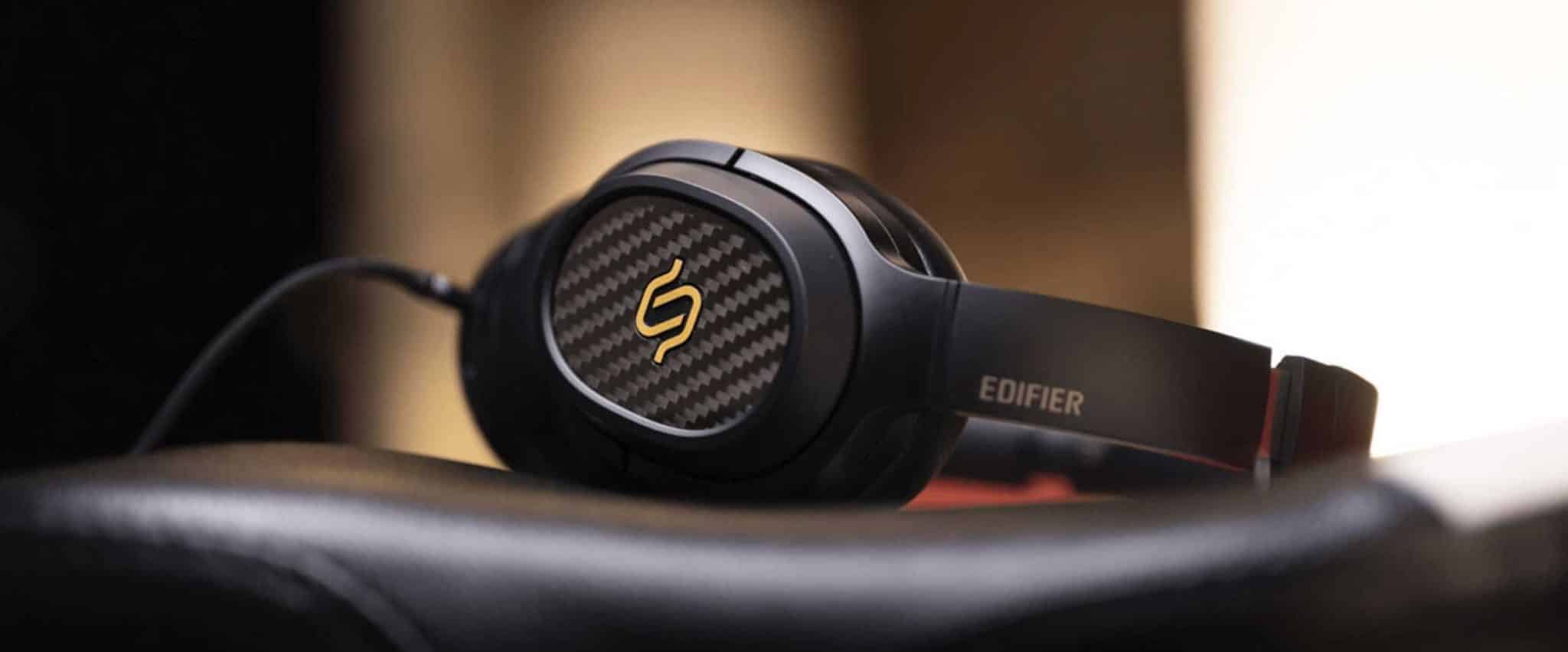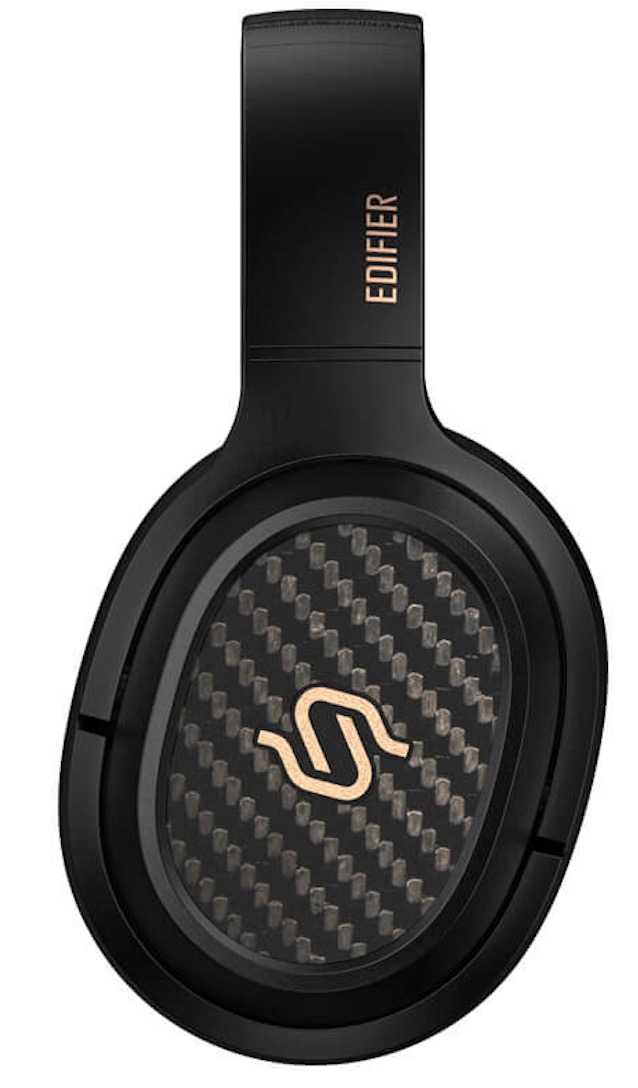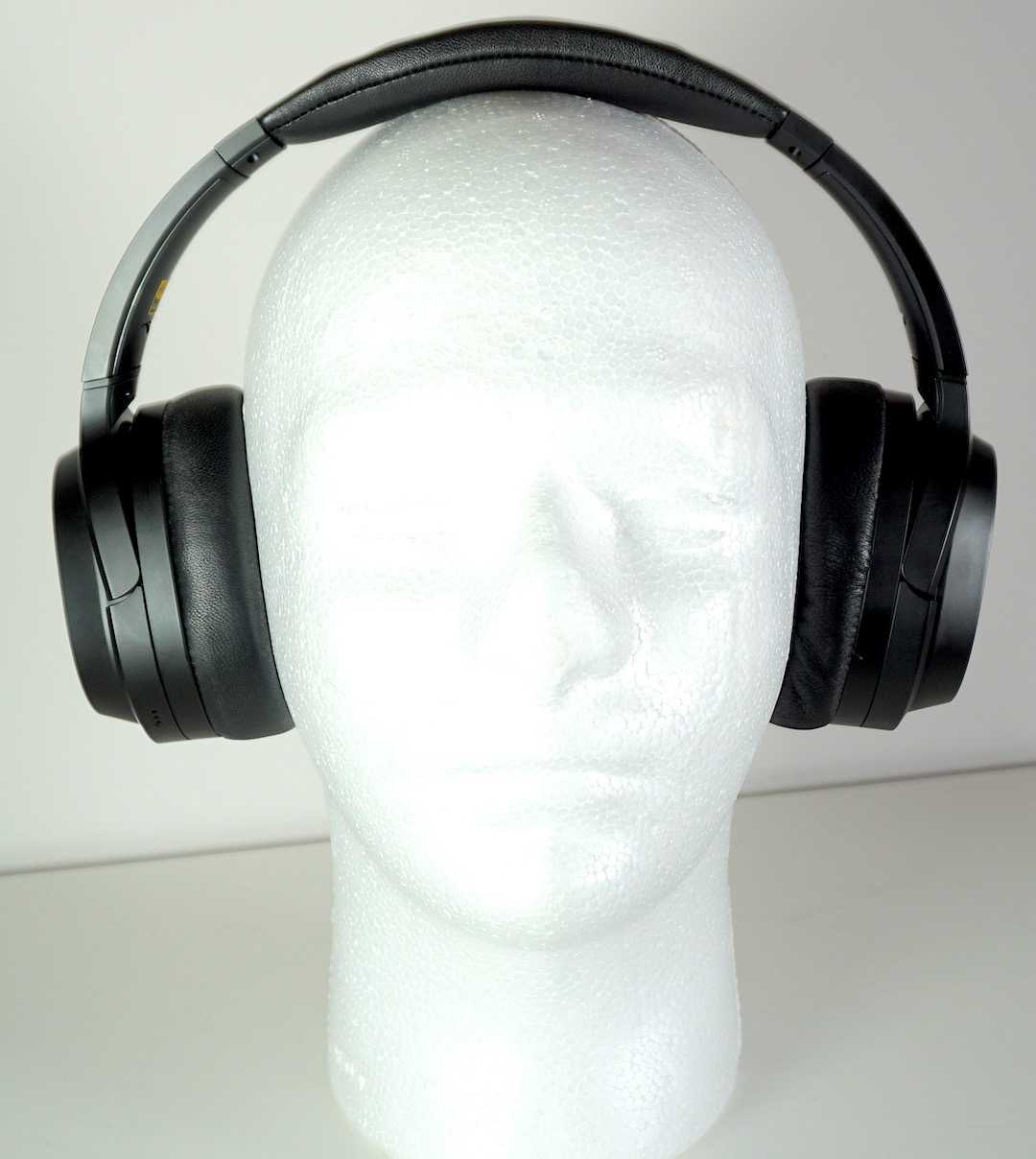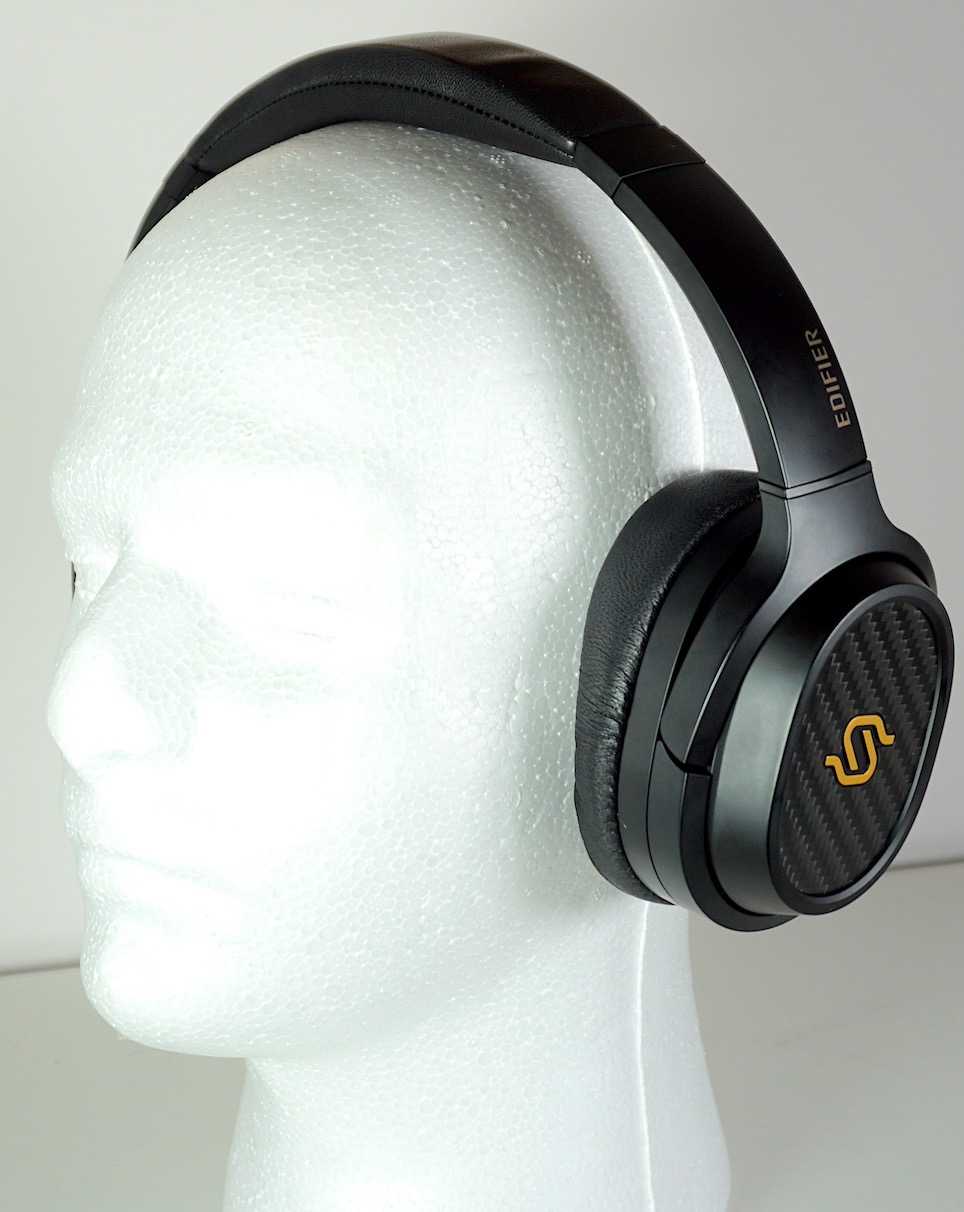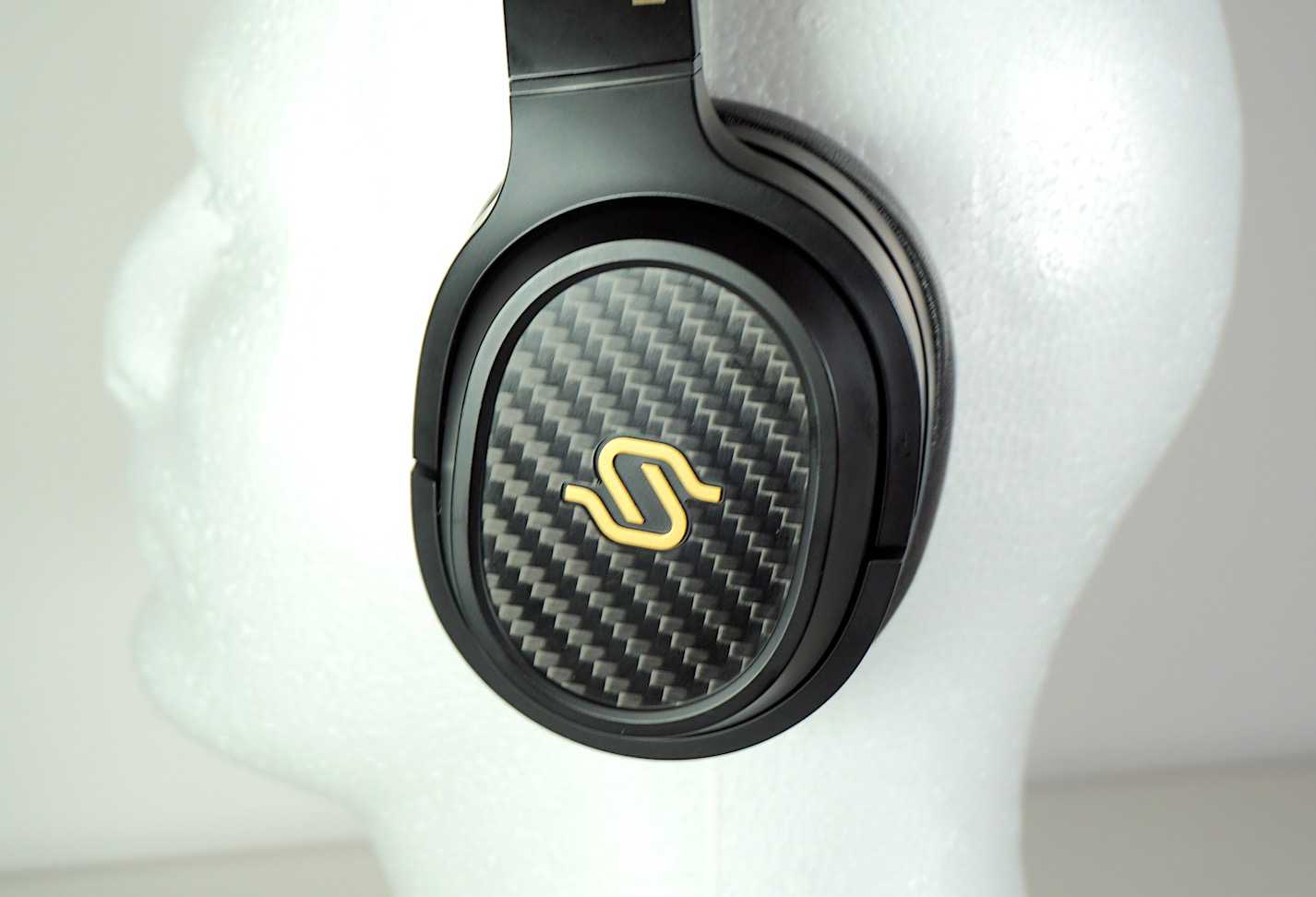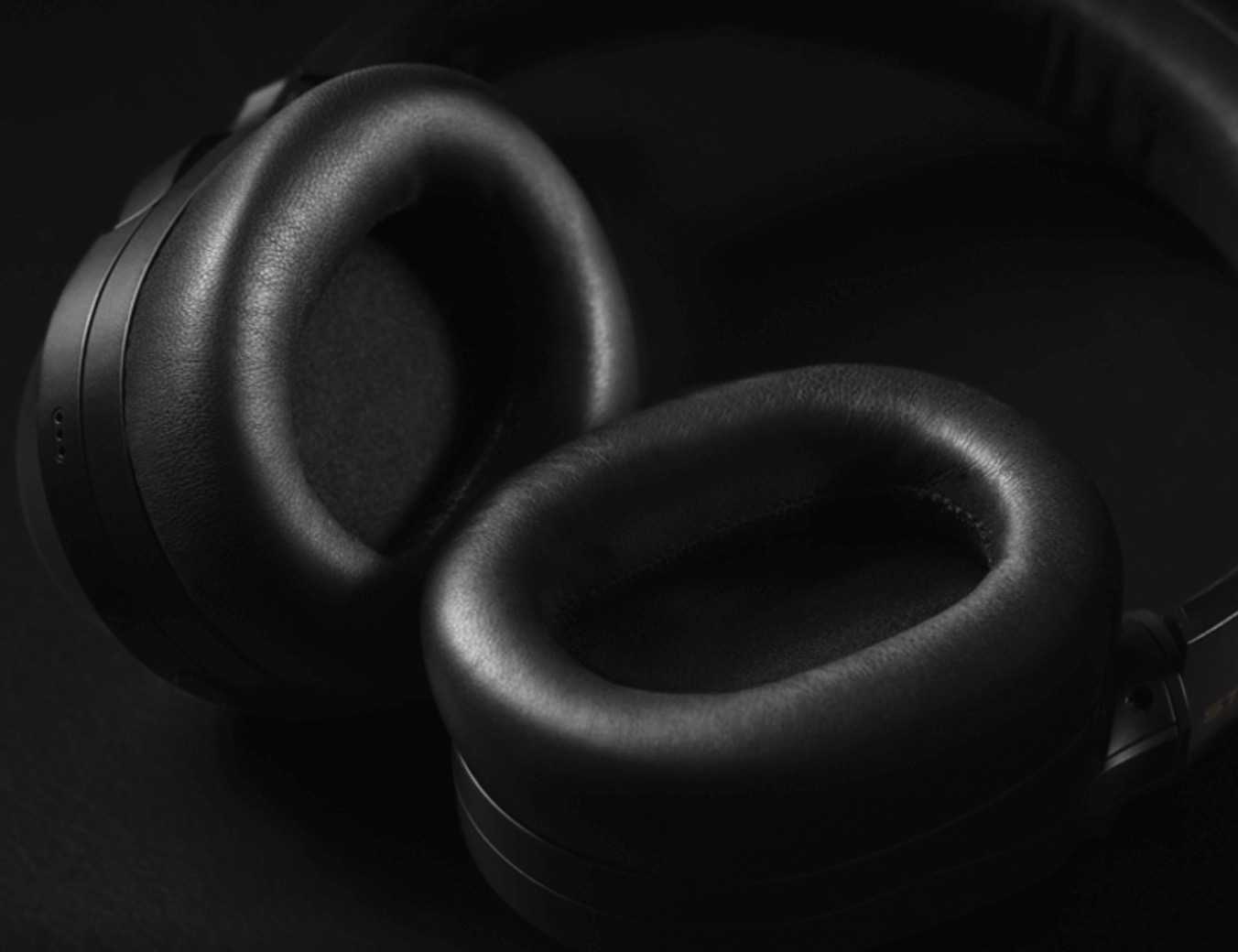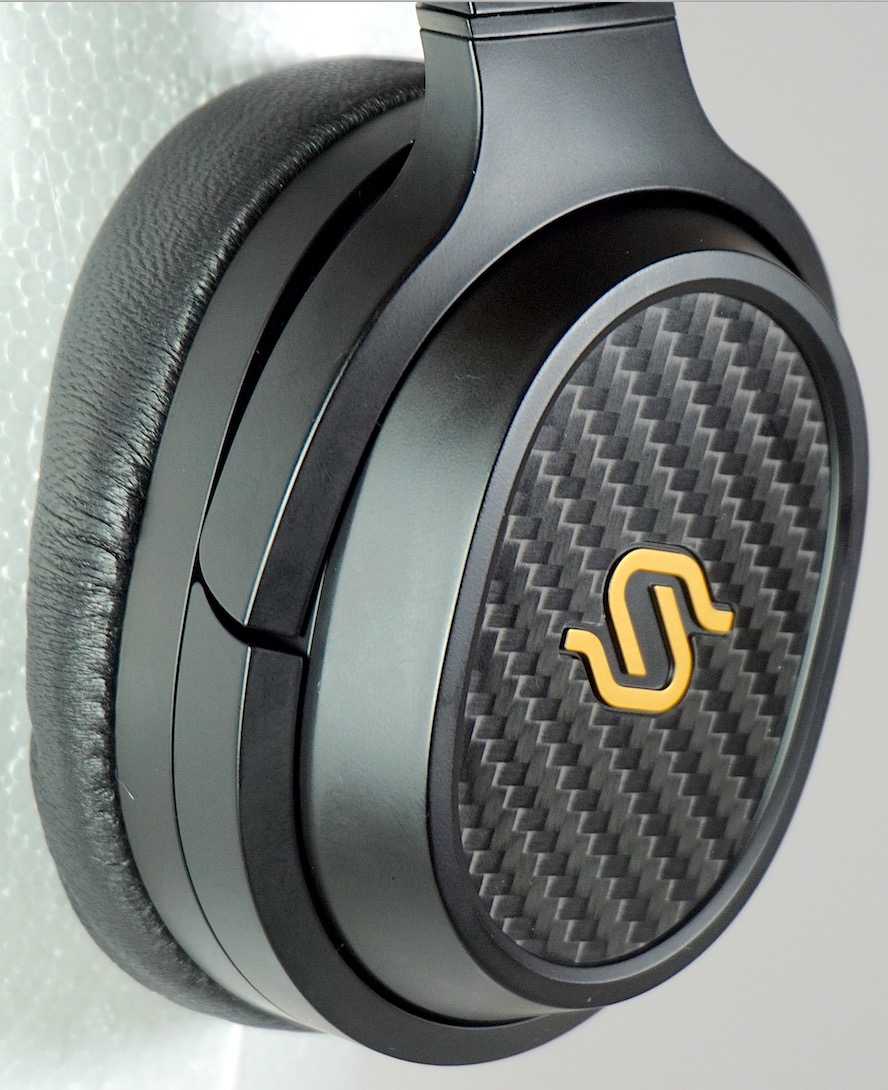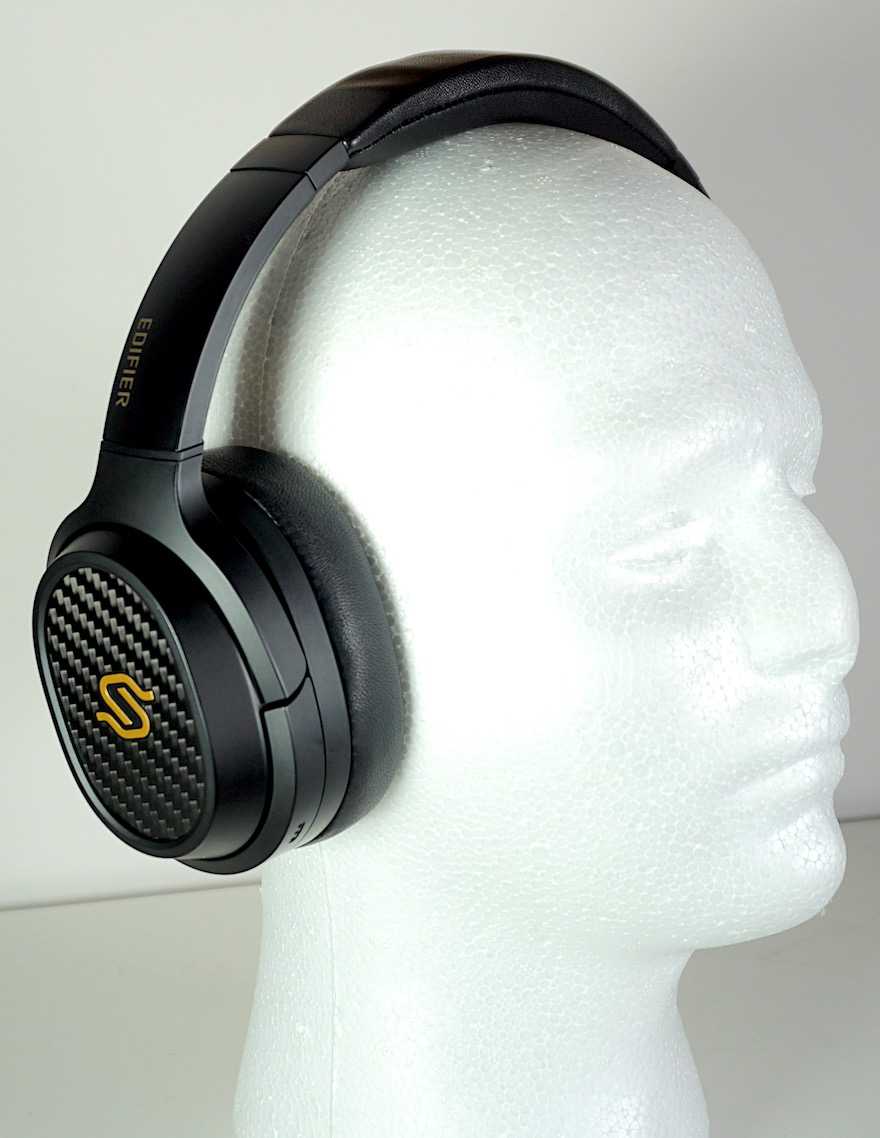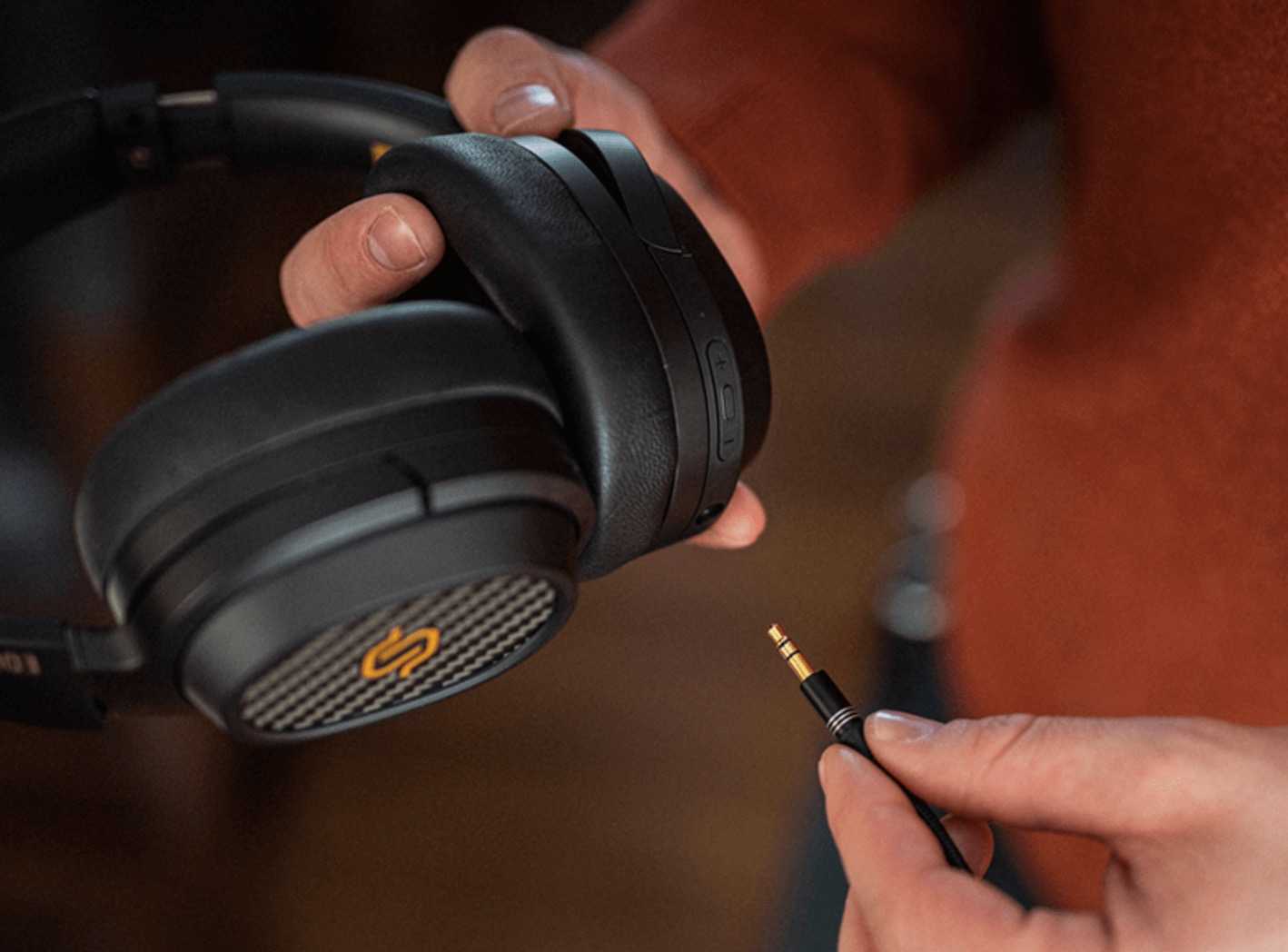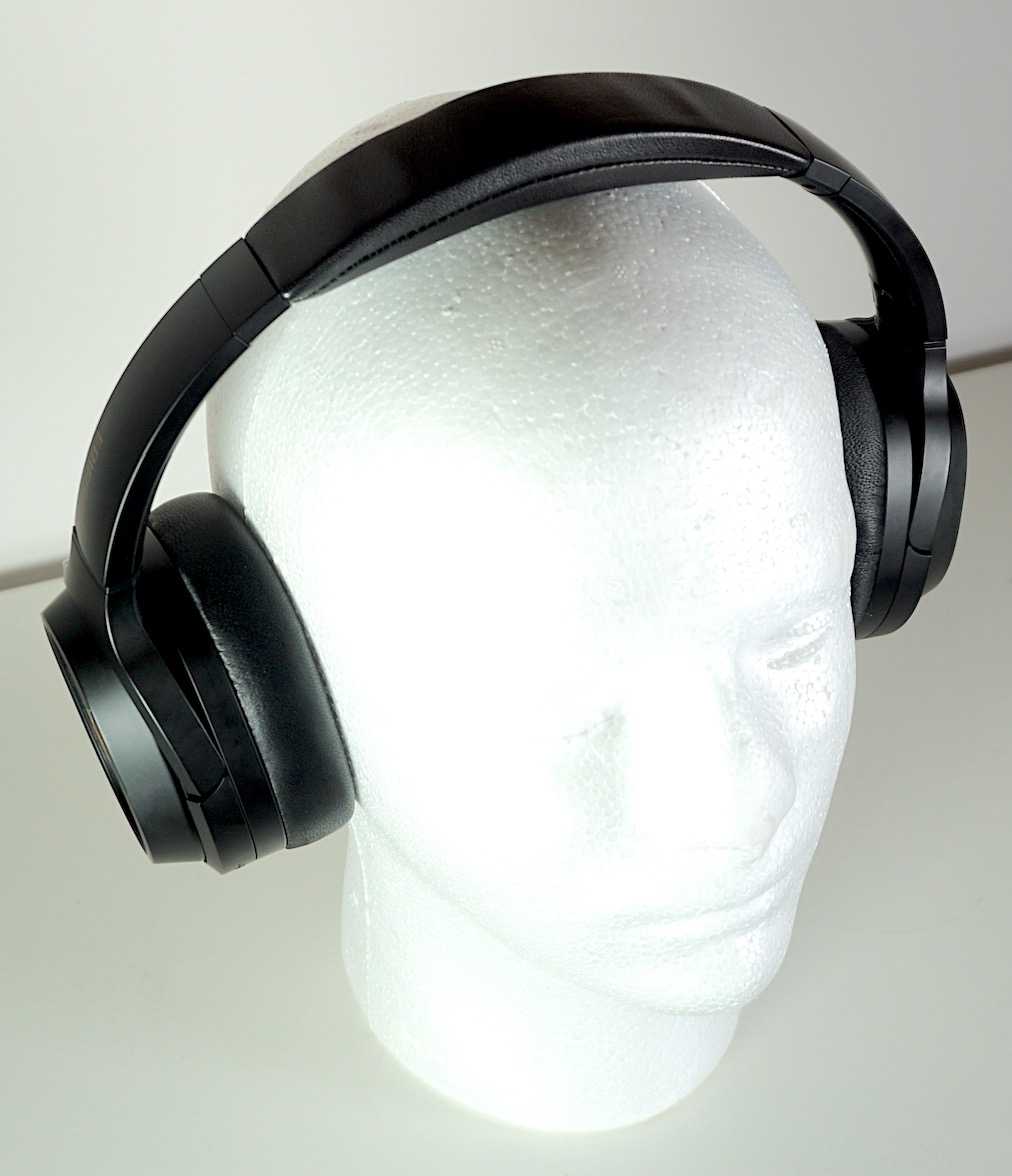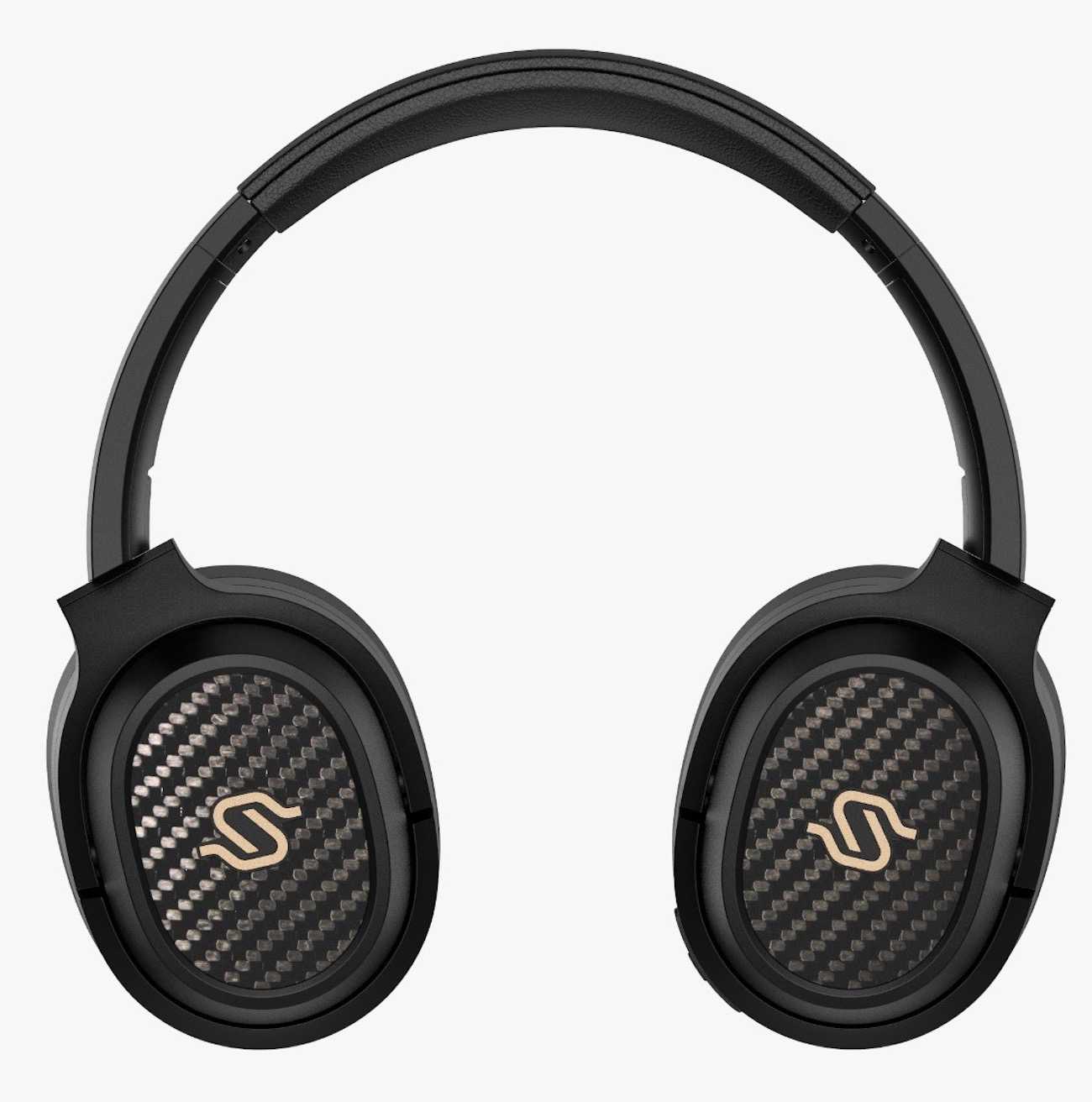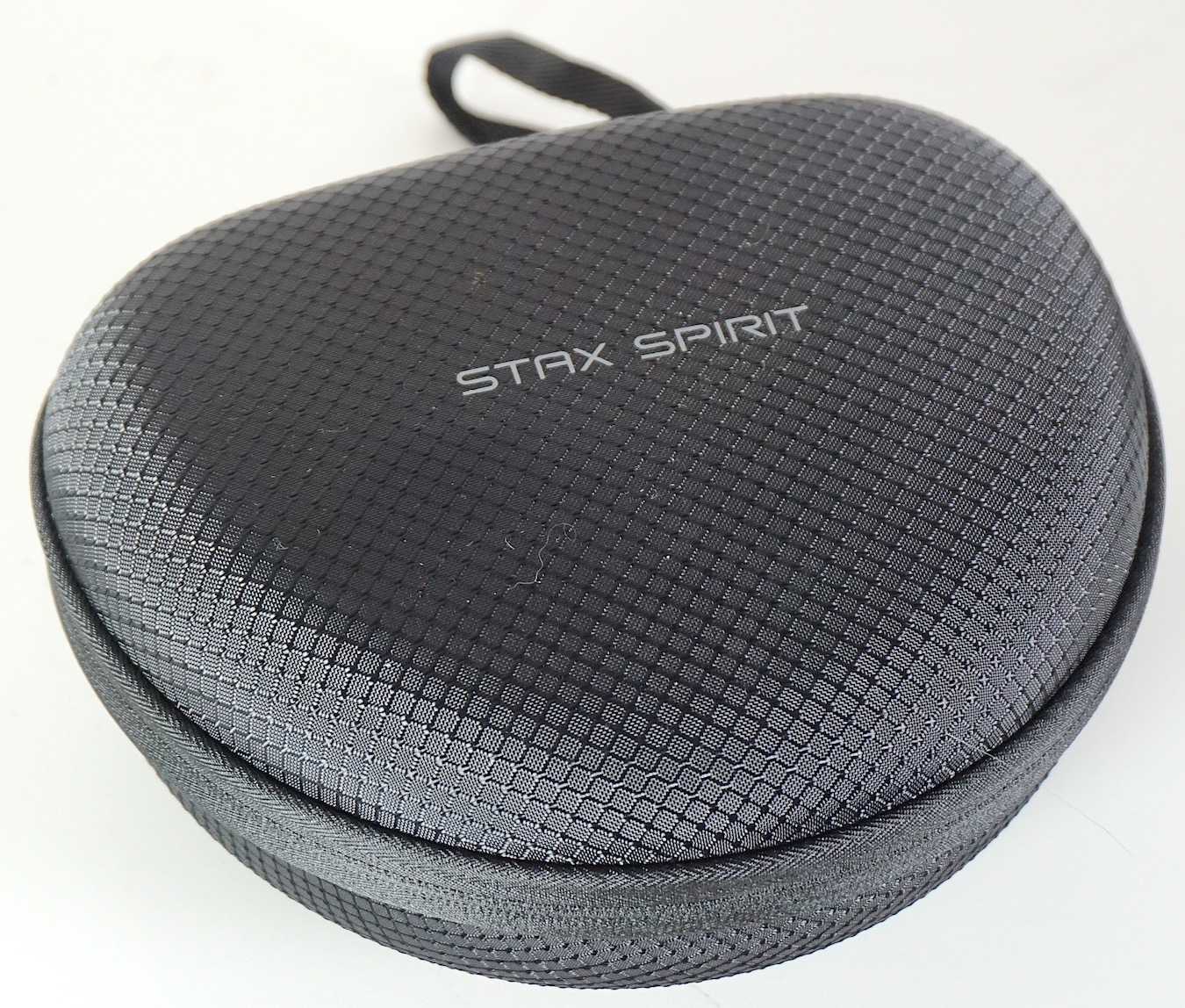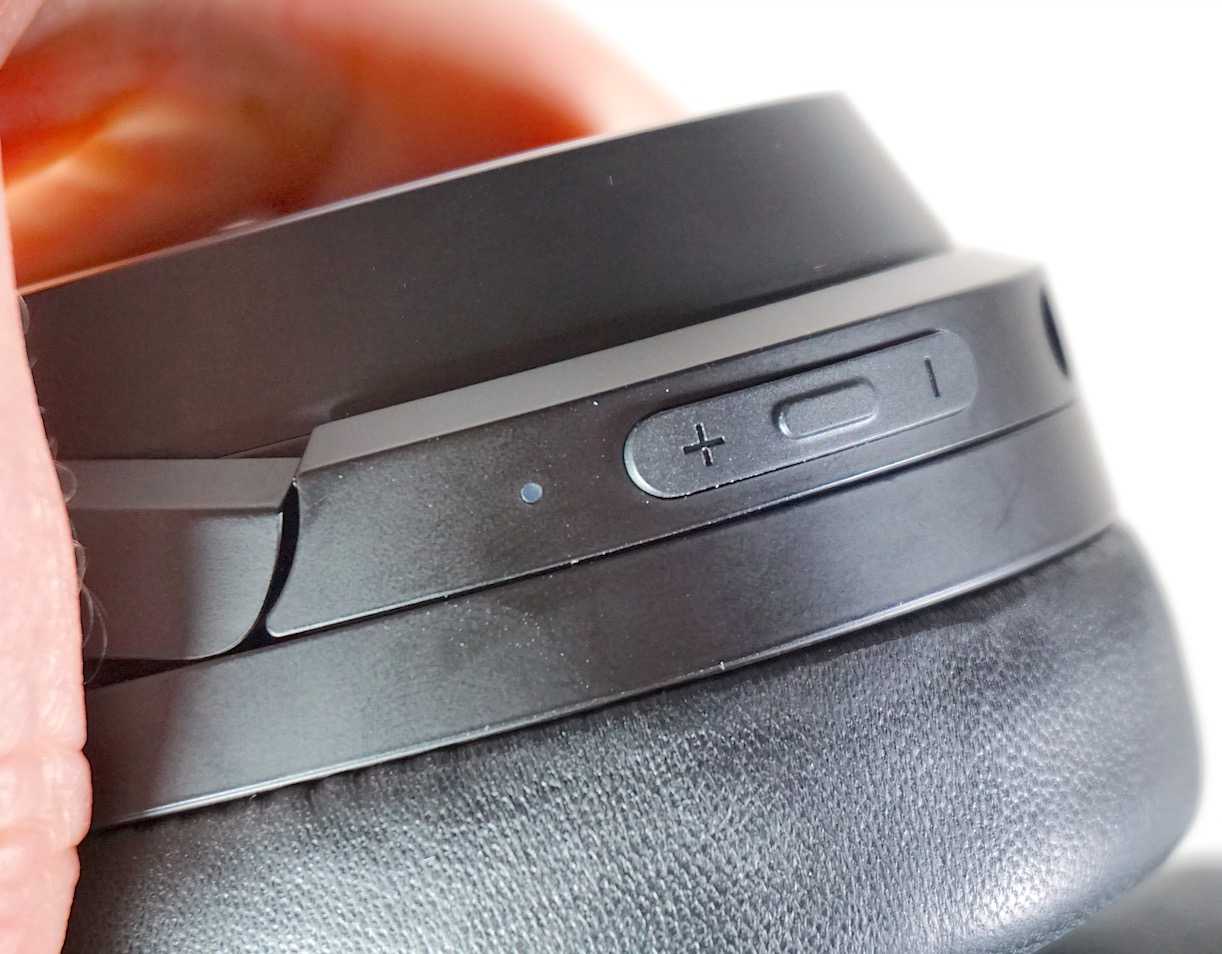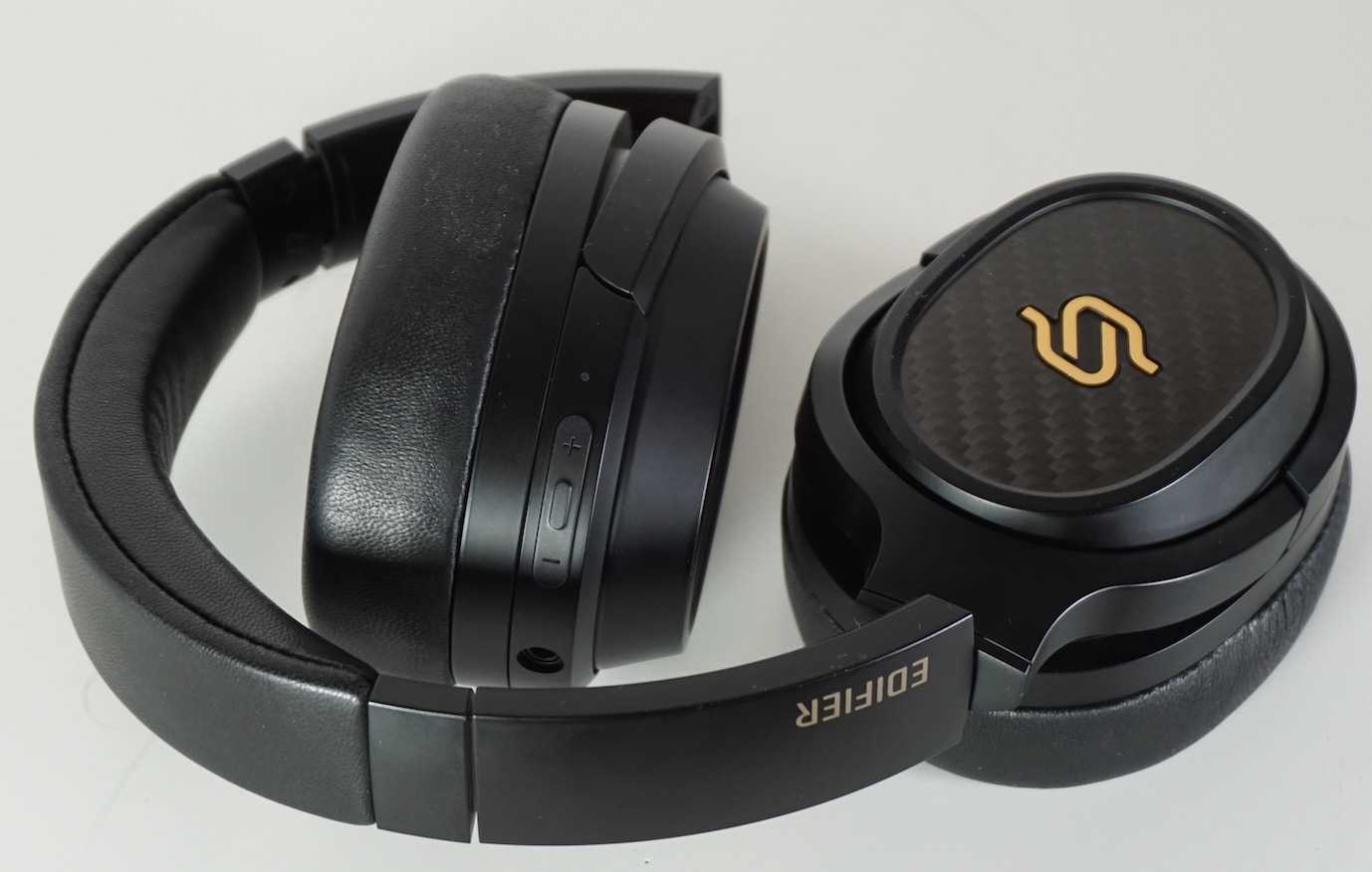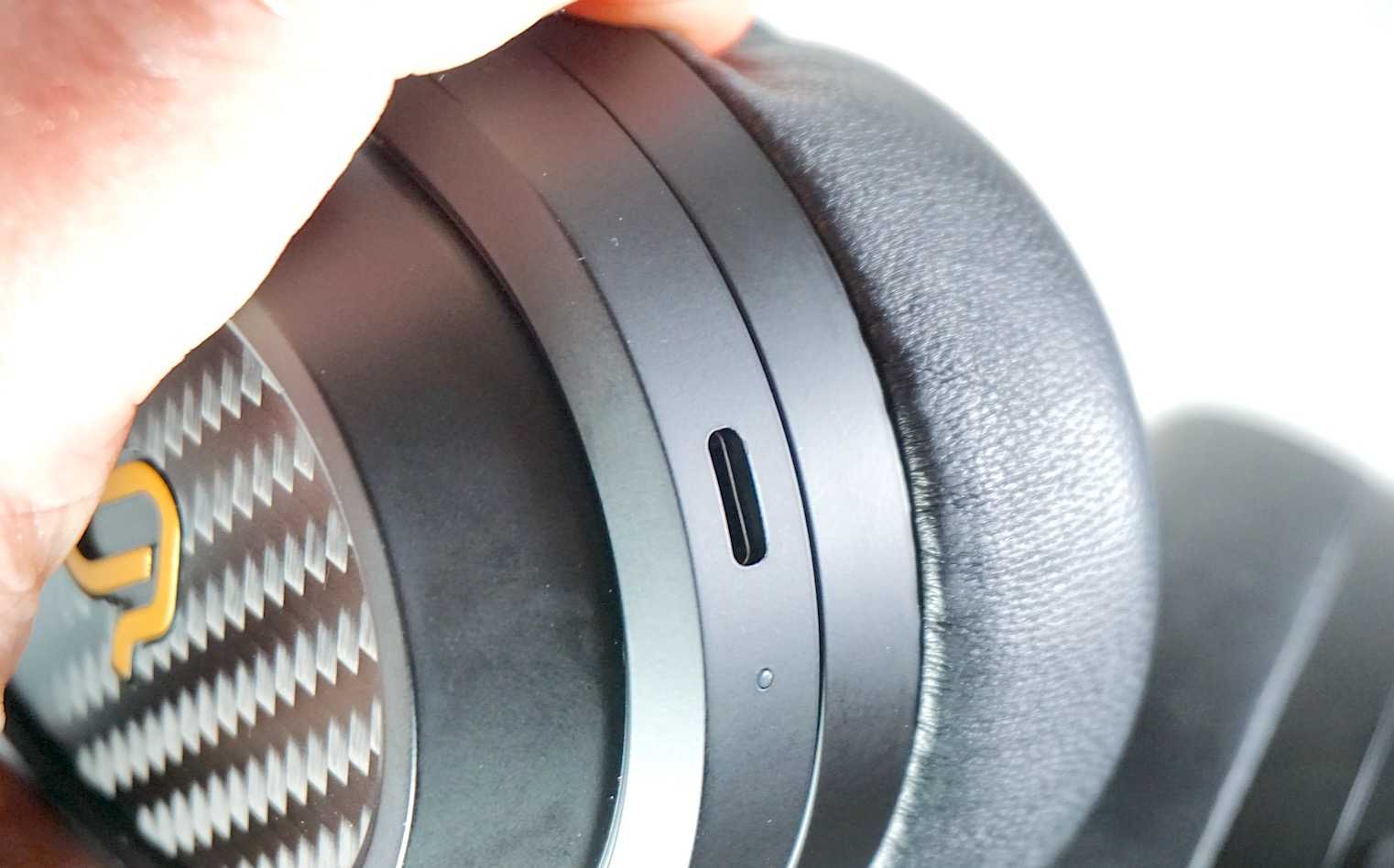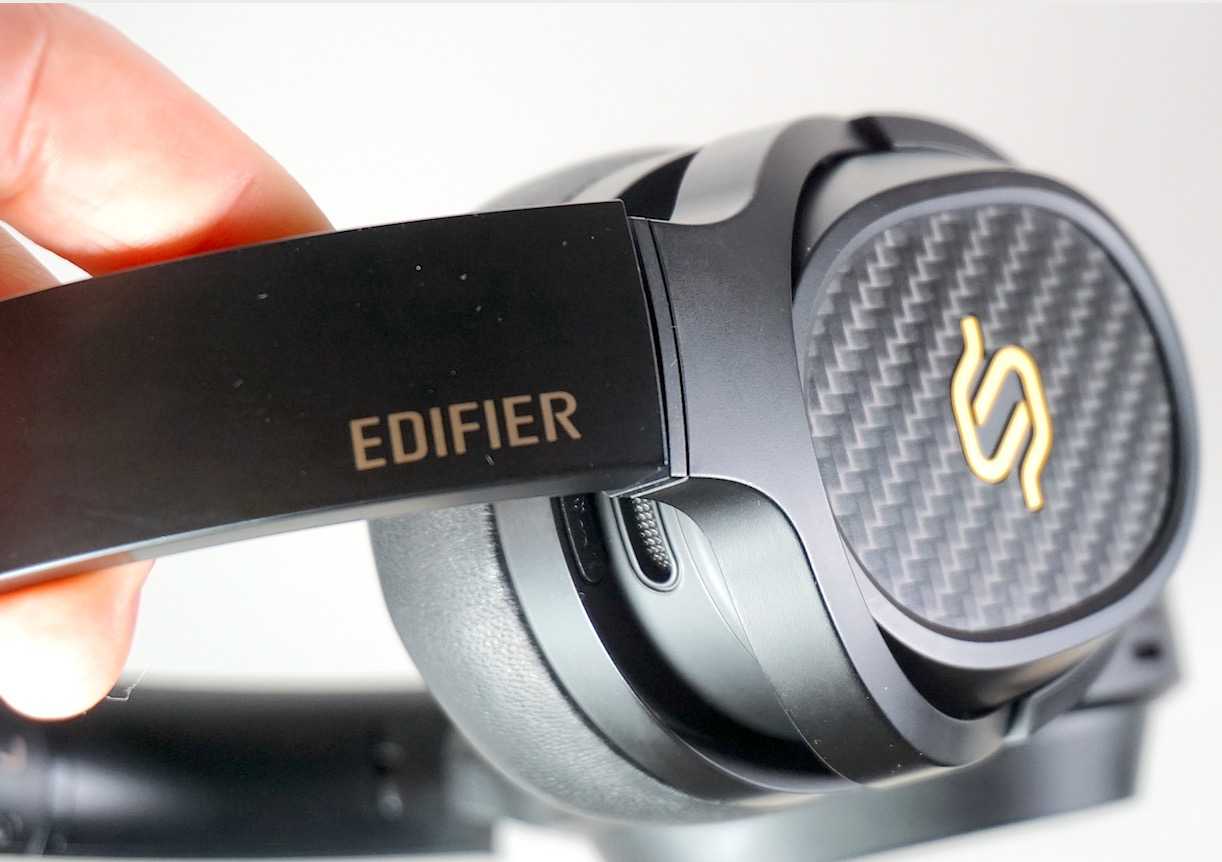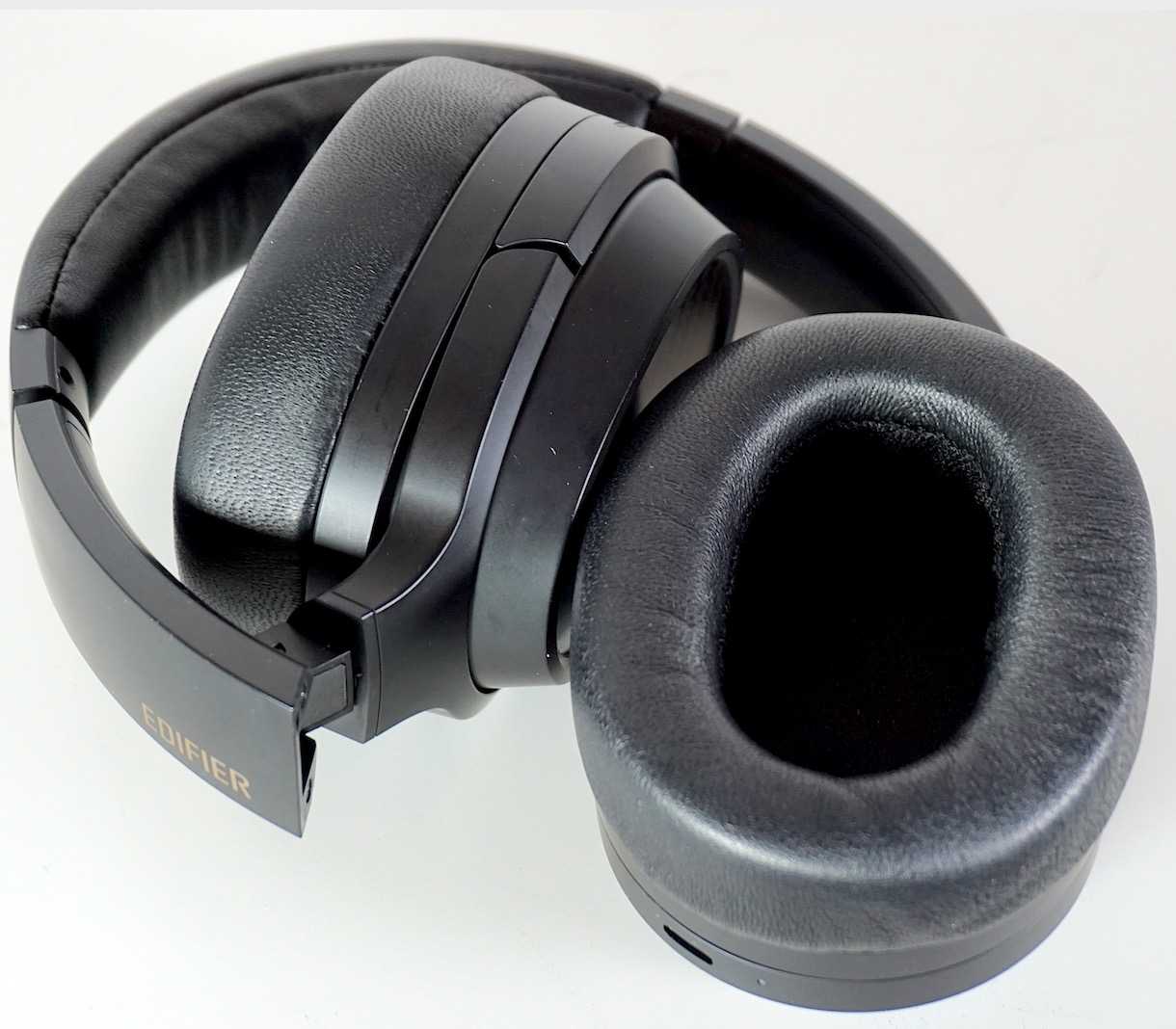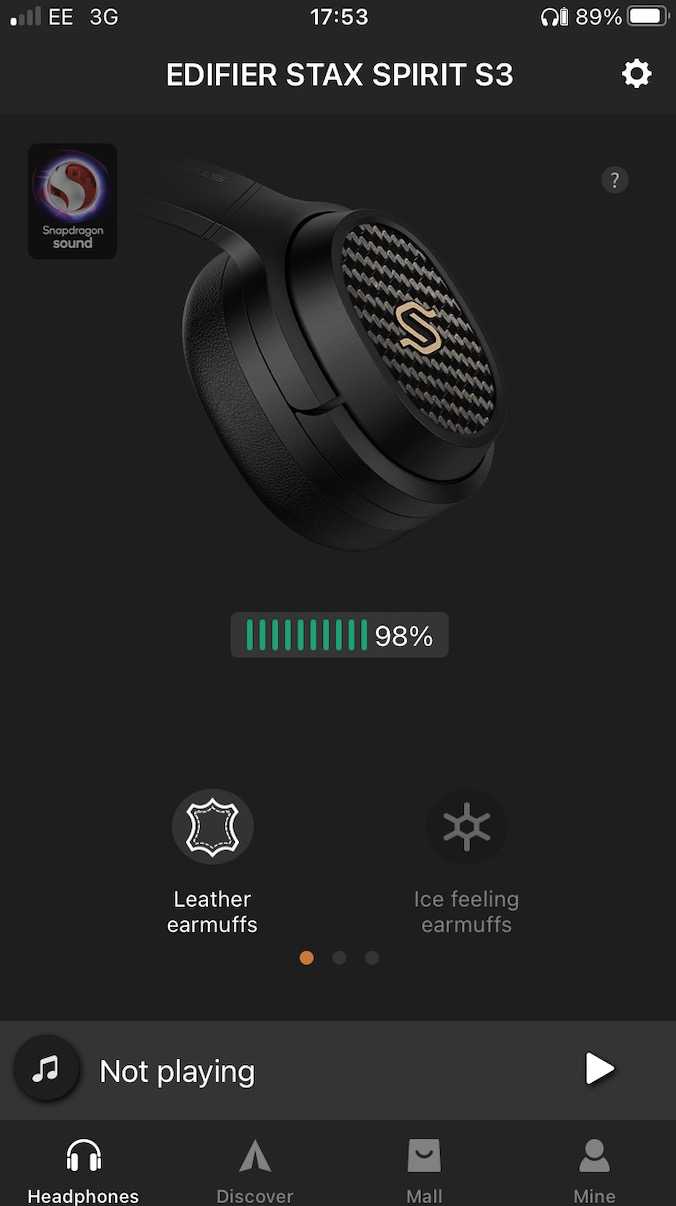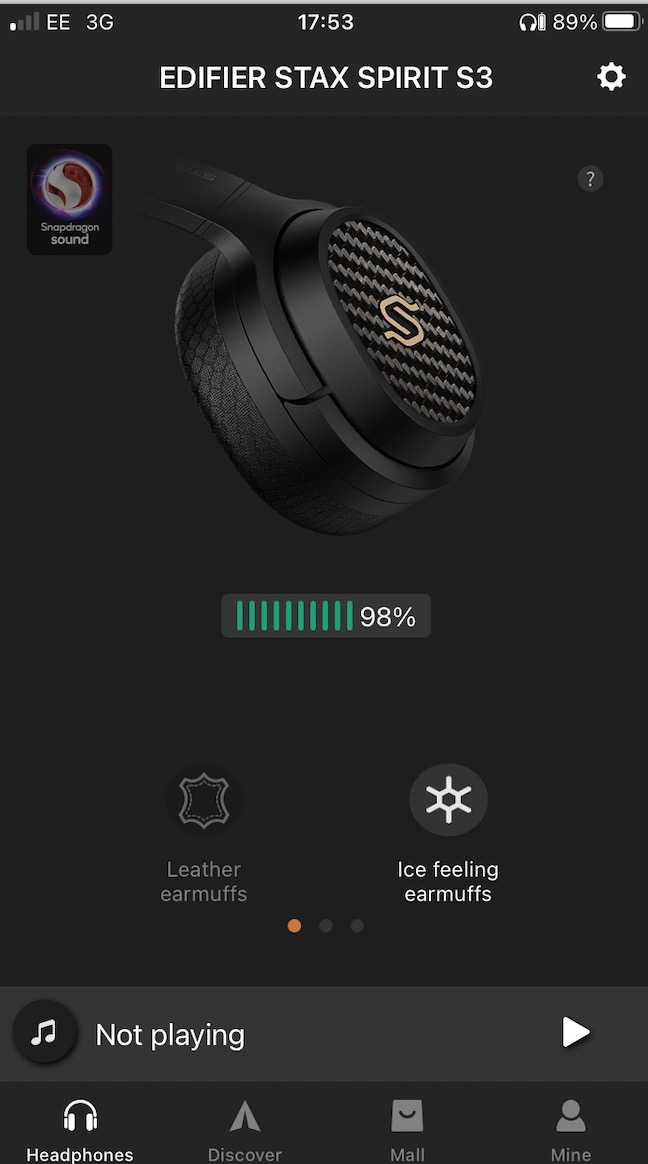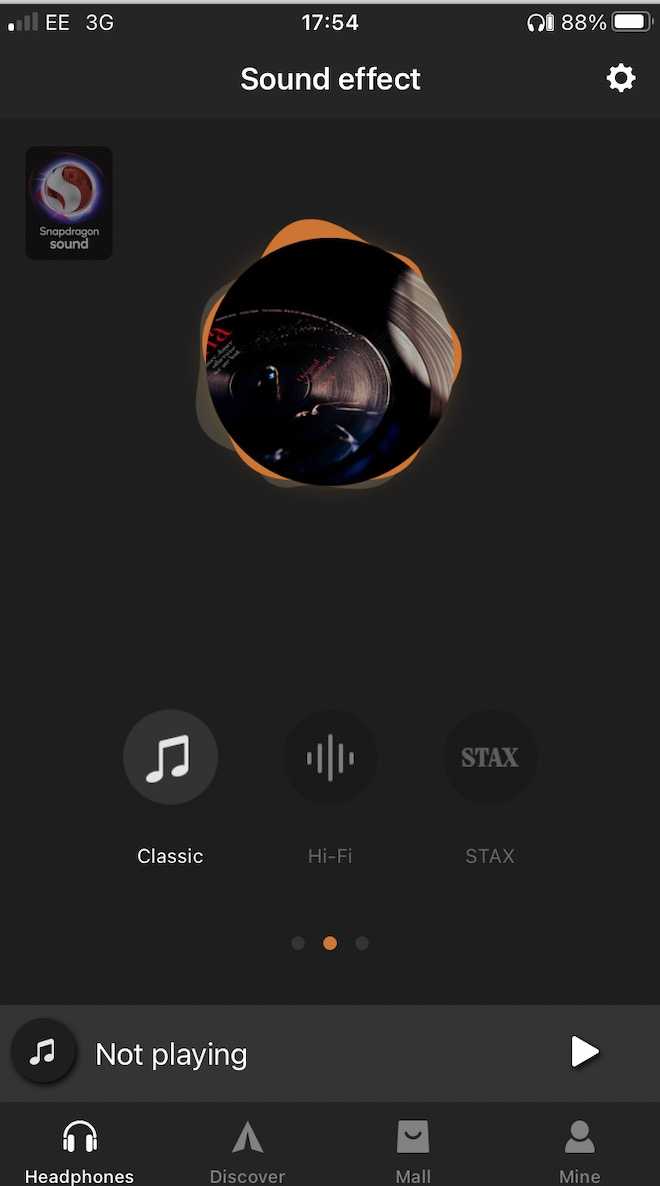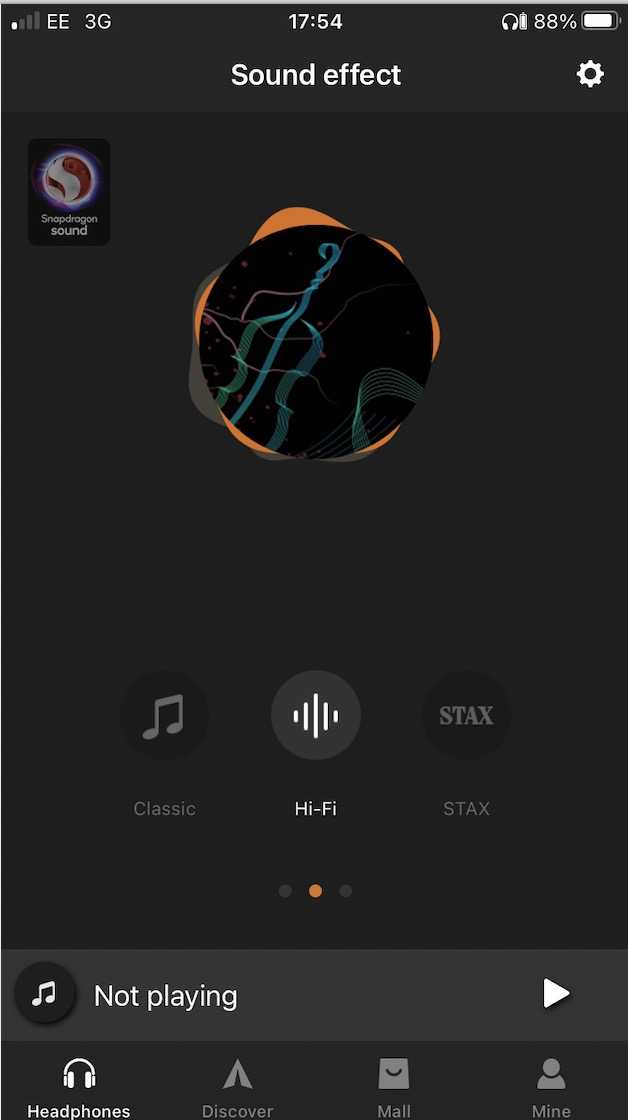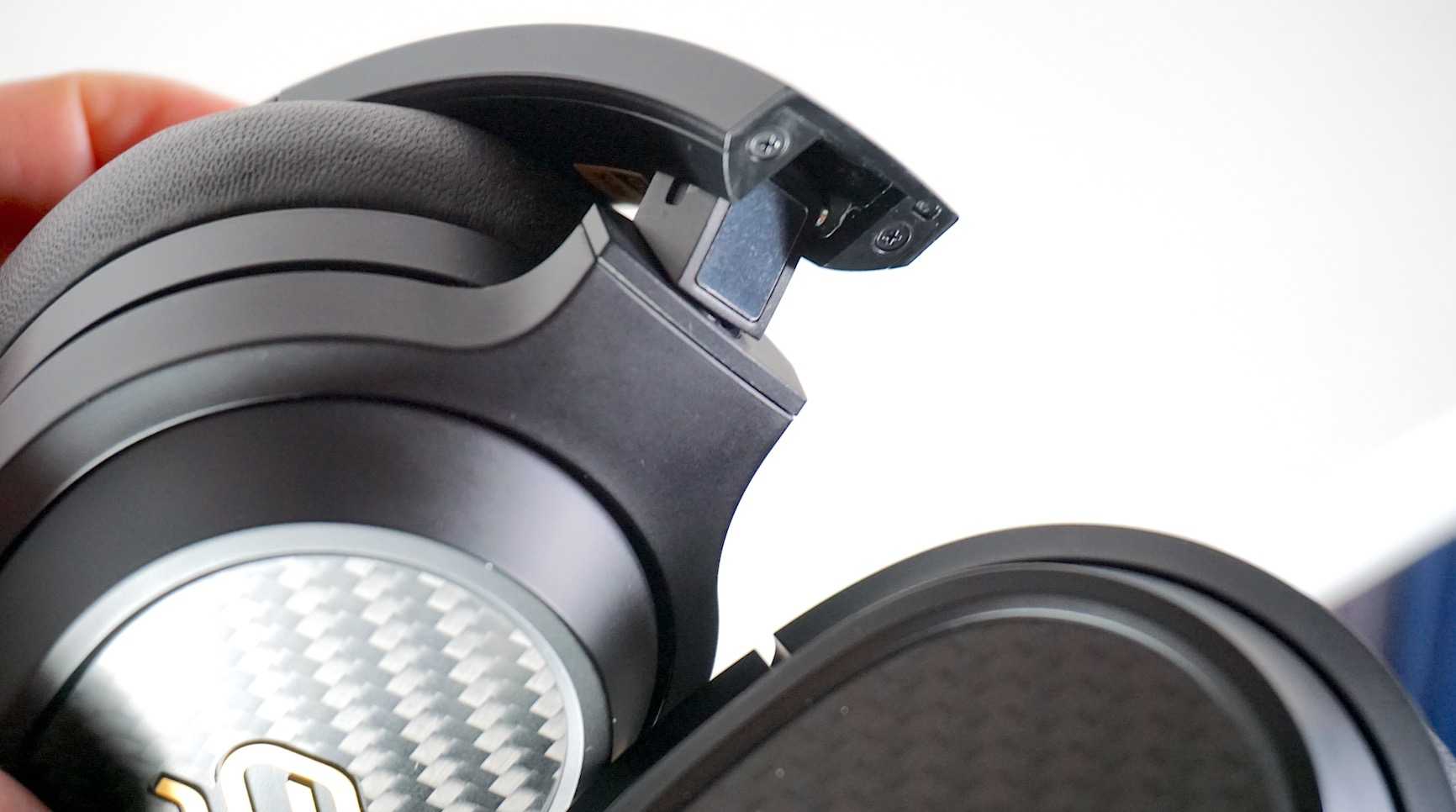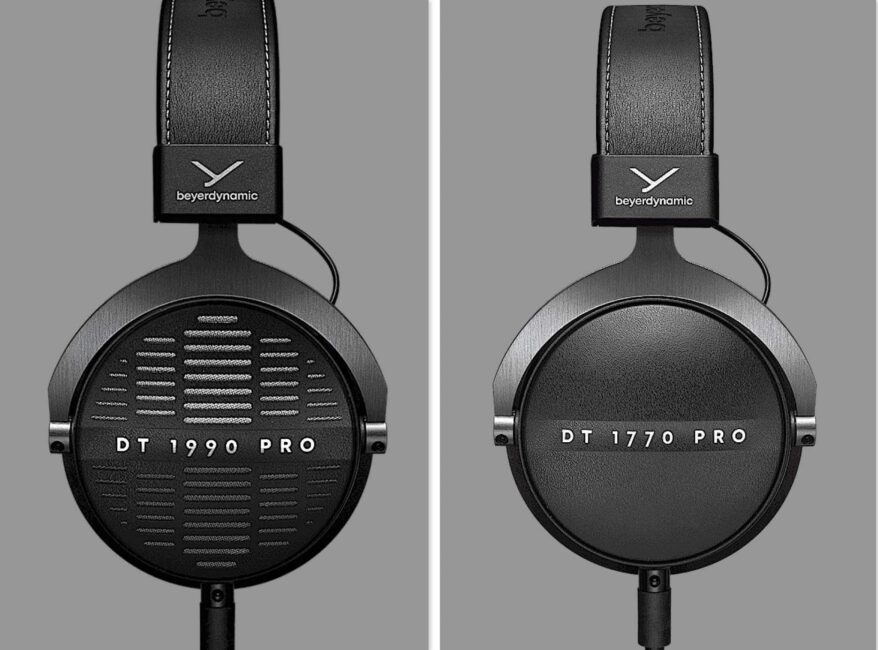The Article
SPIRIT S3 HEADPHONES FROM STAX
8th December 2022
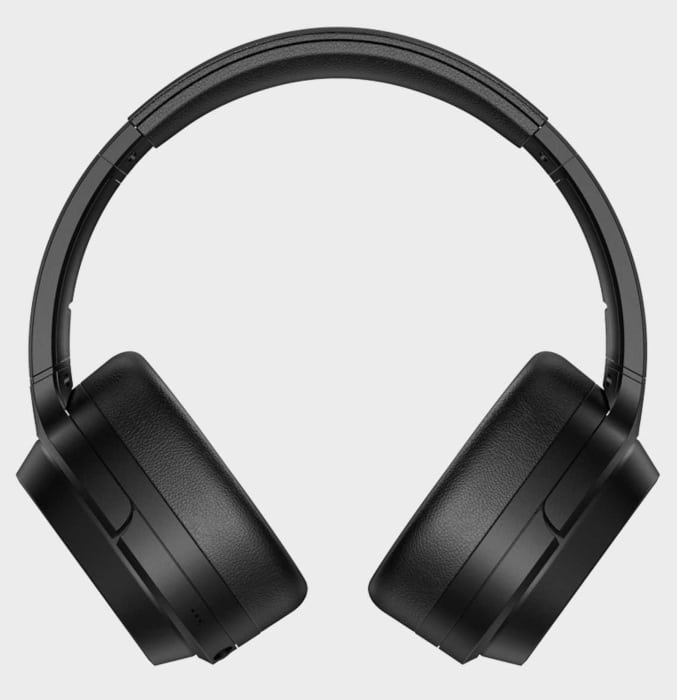
Working with the headphones specialists Stax, both it and Edifier offer a new set of wireless headphones based, Paul Rigby finds, on Planar drivers
I’m a big admirer of Stax, the headphones people. I own a two pairs of their electrostatic models: the SR-202 Basic electrostatic headphones plus SRM-212 driver unit and, in addition, the high-end SR-007A headphones with its SRM-007t valve energiser. I’ve considered the brand to be the pinnacle of headphone design, when driven properly and correctly.
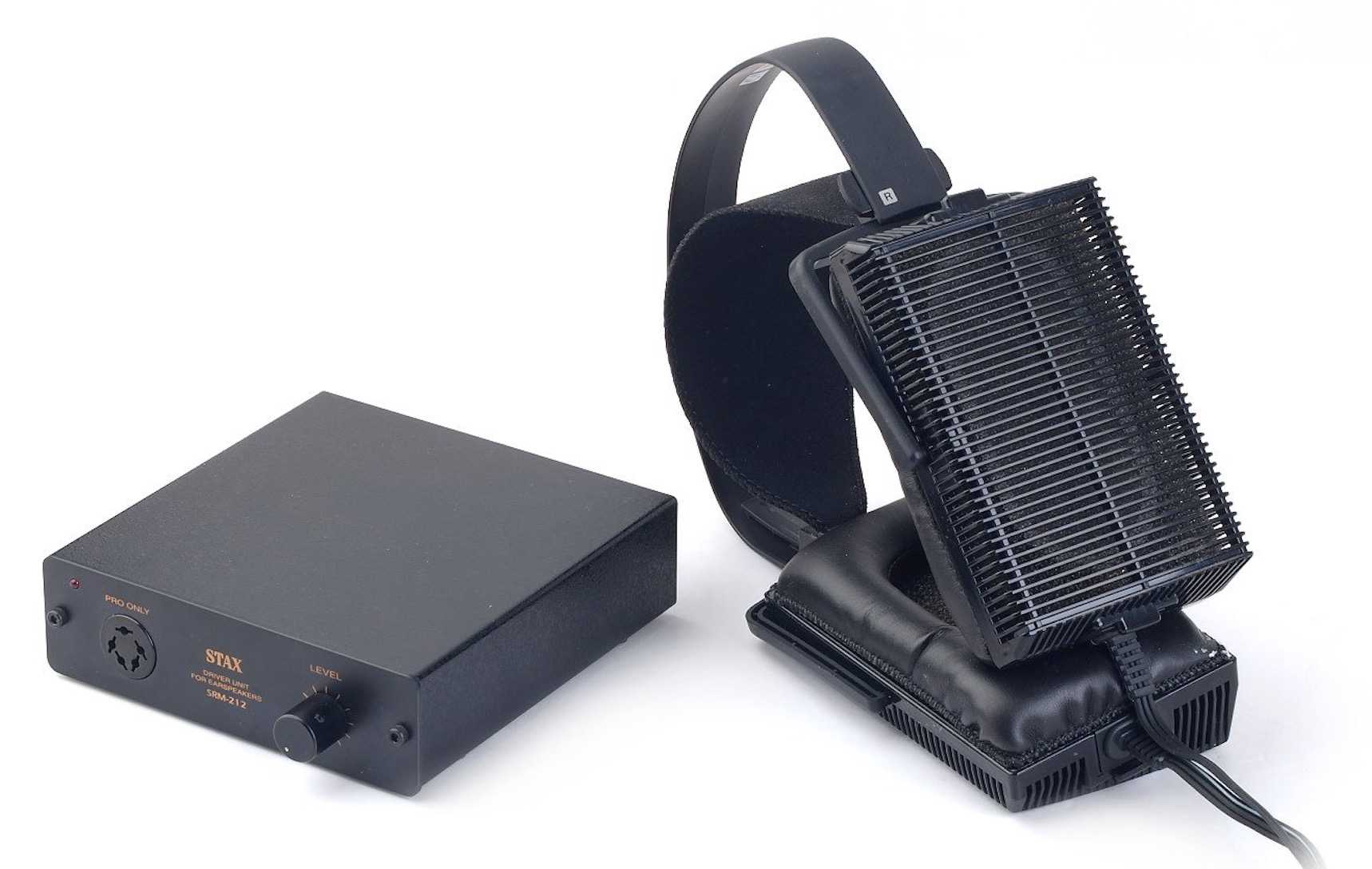
I was thus concerned when I heard that the original Japanese brand had been bought out, way back in 2012 for just under £1.12 million (equivalent). In this case by the Chinese company, Edifier. Edifier is probably best known for its low-cost powered speakers but it does offer a range of products including communication headsets, gaming earphones, earbuds, AV speakers, computer speakers and more.
Those early concerns were not reserved to myself, I have to say. There was – at least in our corner of the tech industry – a bit of an outcry. To such an extent that President and CEO of Edifier, Wendong Zhang, decided to go on record with, “…STAX should and will remain as I intend it to be that of an independent operation retaining the current team, including Mr. Yozo Meguro (then Stax President) and too retaining at all times the brand integrity that STAX has created and built over the years with products to be continued to be designed and manufactured in Japan.”
Zhang also talked about Edifier’s new investment in Stax in terms of research and development.
He further sought the assurance of concerned audiophiles by adding, “The STAX brand will certainly not disappear as many acquired brands these days are apt to do.”
Since then, I have lost touch with Stax.
Until now.
SHOCK HORROR
What we have here is a new pair of – for Stax at any rate – extraordinarily modern looking fold-away headphones that are – shock horror – wireless. The second shock, for me, is that these headphones are not electrostatic. They are based on Planar drivers.
Picking up a pair of headphones from this venerable HiFi brand, famed for basing its designs on a niche, complex and complicated technology and then realising these new headphones are wireless, driven by Planars and running on Bluetooth is a bit like buying a Morris Minor with included electric windows. It’s takes a moment to get your head around it.
It also took a moment to visually take in a pair of Stax headphones with the Edifier name printed twice on the chassis.
Why is this? What we have here is an example of Edifier’s Stax Spirit line of products. A meeting of minds, you might say. A co-operative product based around Stax’s expertise. The Stax Spirit line is different and separate from the earspeaker classic designs from Stax. I suppose you could say this is a way for Stax to dip their toes into the lifestyle market without causing too many ripples among their core audience.
The sturdy box itself arrives in a hard outer folio slipcase while the headphones sit inside alongside a USB cable, auxiliary cable, converter plug to change from a 3.5mm wired connection to a 6.35mm plug and a manual that appears to have fallen out of a Christmas cracker, its so small. Good look reading this one, by the way. I had to call my local University and borrow their electron microscope just to scan the text. The online version is preferred.
REPLACEABLE EAR PADS
You also get a second pair of replaceable ear pads offering a lighter, mesh-like design instead of the heavier, lambskin default fitted out of the box. Alongside that is an earpad tool that looks like a guitar pick. This dinky little thing helps you to remove and swop out the ear pads. The ear pads click on and off the main chassis with a bit of effort but not too much. There are four snap fixings on each earpad which I found relatively easy to manoeuvre. More on that later on.
The hard plastic chassis encourages you to fold the ear cups up to be then twisted 90 degrees for final storage. The mechanism actually feels pretty solid. On the head, meanwhile, the headphones feel very comfortable indeed. I have a massive head – not to hold a massive brain but I use the extra space to store a spare coke and a packet of peanuts – but even on this expansive bonce, the Spirit S3s felt very comfortable.
As I say, this is a Planar-based driver headphone design but I was intrigued to hear that the drivers were licensed from Audeze.
BLUETOOTH & CODECS
The S3’s support Bluetooth 5.2 over a maximum distance of 10m. The codecs including AptX Adaptive, AptX, AptX Voice and AptX HD plus and Snapdragon Sound from supported devices (and I don’t have any of those, I’m afraid). No LDAC, though.
Here, you can hook the S3s to two Bluetooth devices. This means you could connect them to a computer and your phone, if you want to take calls with the S3s, for example.
In my case, I connected the headphones to my iPhone to control EQs via the supplied app plus a separate digital audio player which controlled the actual music. More on the app later on.
Oh and if your wireless battery dies, you can still use the S3s wired via the included cable.
CONTROLS
There are three controls on the S3’s chassis: volume up and down which can also be used as next/previous track. Hold both together for a factory reset and for pairing mode.
Between the two buttons is a raised third button for power, play/pause, changing the sound mode, enabling a game mode EQ and launching your phone’s voice assistant.
Just to be clear, the Spirit S3s do not support active noise cancelling although the earpads themselves provide decent noise cancelling all on their own.
You can charge these headphones for around 80 hours off a single charge and that charge takes around one and half hours in total. There is a 10 minute fast charge though which will still give you around 10 hours or more of use.
SOUND QUALITY
To begin, I wirelessly paired the headphones to my iPhone, loaded the YouTube Music app and played The Word Girl via Scritti Politti, the song with the rather wonderful bass guitar line. This was a stream running at – last time I looked – 256kbps AAC.
First impressions? Bass was strong but it should be, this song is all about the bass line. Even so, the S3 never swamped the soundstage with it.
Firstly, the bass itself had a measure of complexity, it didn’t offer a blobby bass tone. There was more going on inside the string plucking, sonically.
Secondly, the bass backed off enough to allow a measure of space to roam the soundstage. This meant that midrange detail had room to manoeuvre.
The vocals were the first to benefit, adding a measure of agility and delicacy. Percussion provided varying tonal shades now while the reggae-like rhythm guitar offered a metallic shine. Secondary percussion now had a greater say within the mix.
LAPTOP CONNECT
Next up? I connected the S3s to my MacBook. Actually? This was an achievement all on its own because not all Bluetooth-capable HiFi even manages to get that far with my laptop. The S3 had no issues though.
I ran the music playing software, Audirvana and played Elvis Presley tootling The Girl of My Best Friend at DSD64.
Now this is a pair of wireless-capable headphones, let me remind you. I find this genre of headphones to offer less air and space in the mids. On the whole? Wireless headphones can be rather claustrophobic in their approach and can lack detail. Now sure, the S3 designs were not up to the best wired products in this price point but, for wireless designs, they offered some of the best sonics I’ve heard in a long time.
Playing The Police’s Message in a Bottle at DSD64, there was a real sense of maturity in the mids here. That is, the midrange offered plenty of information, sounded confident. Sometimes wireless headphones can sound a little tentative and weedy. Not here. Sure, the firm bass foundation from the Spirit S3s helped but there was enough tonal realism up top to put a smile on your face.
DAP PLAY
I then paired the headphones to my Astell&Kern Kann Alpha using the aptX HD codec and played The Doves The Universal Want at 24bit/96Khz. I must add that these headphones are pretty easy to drive. I tried pushing the same music via my Sennheiser 4.50 wireless headphones, for example and I had to add a heap more gain to find the same volume on those. So low-power amplifiers should be fine for this Edifier/Stax design.
I was impressed by the early piano rendition on this track which sounded large, resonant and dominant. The piano is a chaotic machine in sound terms and takes a lot for a device to control it. The Stax phones did a great job. Bass guitar was bouncy and full of impact, lead guitar bristled and crackled with electricity, percussion provided a deep bass thump while the lead vocal emoted all over the soundstage. In short, this high-energy track had the head bobbing and weaving, knee bouncing and a pretty fair air-drumming sequence was undertaken. You should have been there, you’d have been impressed.
APP & EARPADS?
In terms of the accompanying app? There are switches to reassign the button commands while the two EQ settings assigned to the ear pads include the following.
With the lambskin ear pads fitted: selecting Leather Earmuffs (that’s what it says on the app) adds a measure of bass emphasis. Switching to Ice Feeling Earmuffs (oh, yes) adds focus to the bass, losing lower bass, hardening the upper bass and placing a slight edge on the midrange.
With the mesh-type ear pads fitted – my ears felt a lot cooler firstly (ideal for hot Summer months, then). Secondly, I seemed to require more gain to hit the same volume level: switching the Leather Earmuffs EQ on, bass was rather recessed, midrange a little rolled off and the overall presentation subdued.
Switching to Ice Feeling Earmuffs the extra emphasis of this EQ pushed the frequencies harder against these ear pads but the overall sound was more balanced now. Certain midrange crescendos could be a little sharp, being slightly hard in the upper mids. The soundstage was quite broad though.
In the end, I did feel that these ear pads veiled more of the final sound and that the S3s had to try harder to reach your ears. I preferred the leather ear pads. The latter appeared to be more naturalistic, more transparent.
Bottom line on the earpad issue? Try both ear pads yourself and try all of the available EQs with each earpad type before you settle on your preferred sound type.
MORE EQs
Staying on this app, if you swipe the screen to the left, you entered a second screen offering three more EQs: Classic, HiFi and Stax.
Classic was my default during this review. Changing to HiFi seemed to place emphasis on the vocals but thinning the same, reducing bass response. This EQ could have easily been named Voice Mode
Stax mode pushed the music into a strictly flat response, pulling bass back into the mix and creating a much more neutral, even presentation. Some will dislike the lack of sonic excitement from this mode. Others will prefer it for a perceived extra realism. I felt rather torn myself, switching between one and then the other. I’ll need more time to decide I think but the two modes are worth your consideration.
Swiping again, a Game Mode EQ presents itself which appeared to place emphasis on the mids. I quickly discounted this option for music listening.
WIRED MODE
Finally, in wired mode, which is only a back up for this design, after all, I thought the S3s sounded more coherent. The sound was sensibly structured with a new-found realism. But hey, that’s wired versus wireless for you.
In fact, I’d like to see a dedicated wired version of these headphones with say a balanced option as part of the feature mix, I think they would be a pretty devastating option to the Sennheiser HD 660 S headphones, for example. But even here, connected via a weedy 3.5mm-terminated cable, they sound pretty proficient to me: neutral, insightful, paced with detail with a smooth effortless midrange performance.
CONCLUSION
I wasn’t quite sure what to expect. Stax in an age of modernity? Whatever next? But in terms of wireless headphone design, I think the Edifiter/Stax Spirit S3 headphones are a bit of a triumph.
They work very well indeed. They are comfortable, connect to devices quickly, offer a useful app, ear pad choices and most importantly for wireless play, an excellent sound response.
I like the Spirit S3 headphones a lot. Easily worth an award, methinks!
STAX SPIRIT S3 HEADPHONES
Price: £329
Website: www.edifier.com
BUY HERE:
GOOD: Compact Design, ease of connection, bass strength, EQ options, detailed mids
BAD: manual
RATING: 8
Apple iPhone
Apple MacBook
Astel&Kern Kann Alpha
Sennheiser 4.50 wireless headphones
Benchmark DAC
Tellurium Q & Titan cabling
Blue Horizon Professional Rack System
Harmonic Resolution Systems Noise Reduction Components

